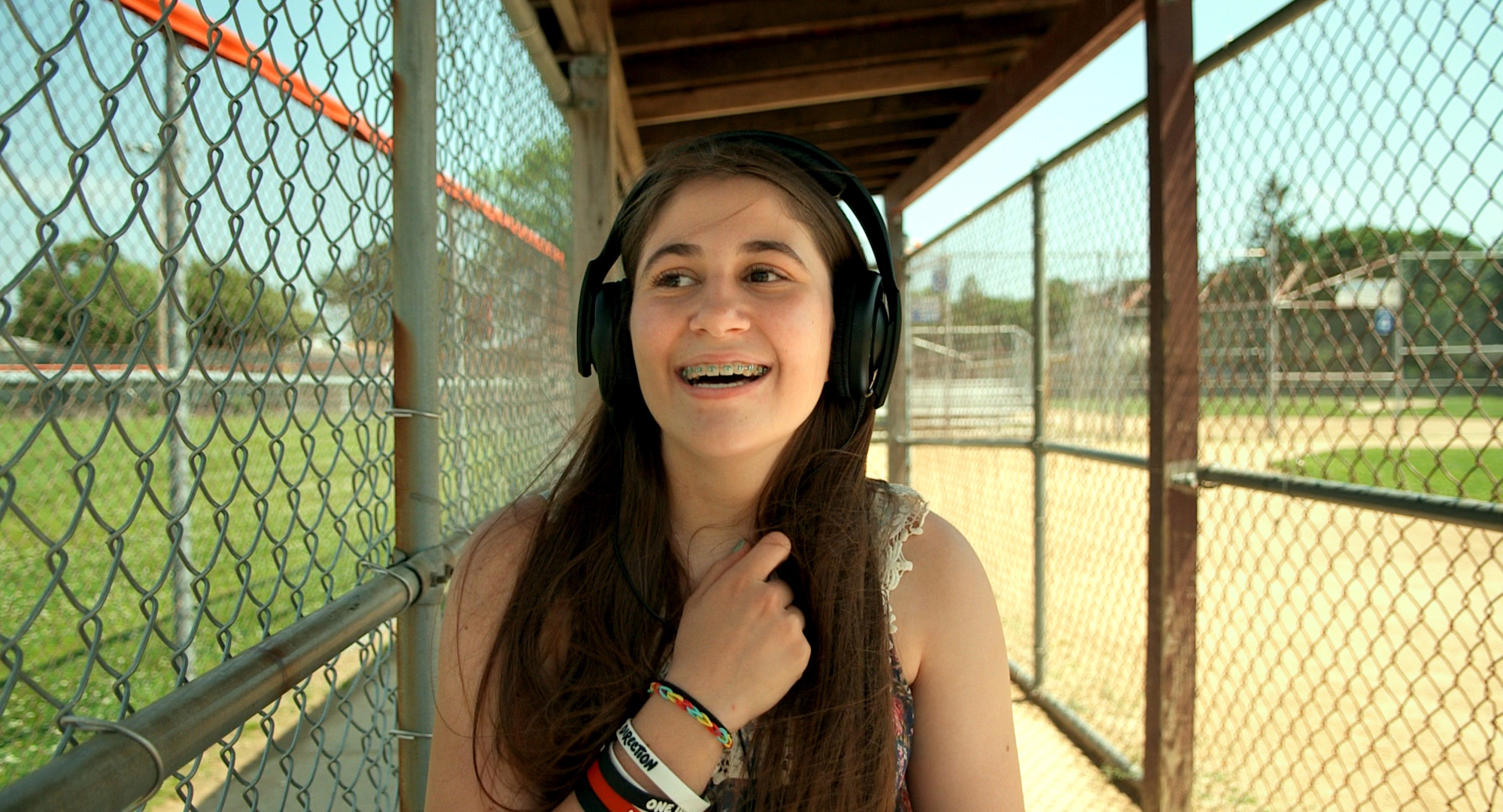A moment of blissful self-awareness gives I Used to Be Normal: A Boyband Fangirl Story (Jessica Leski, 2018) its title. Asked what her life was like before she became obsessed with British boy band One Direction, sixteen-year-old Long Island high school student Elif is candid and reflective, first describing her teenage existence in standard terms. ‘Life was social, you know. I had friends. I would talk and focus on school more,’ she explains. ‘Then I discovered “the boys”,’ she continues. Later confronted with the reality of her supersized obsession – a passion so all-encompassing and free-flowing that a video of her watching One Direction concert footage, screaming and crying with unbridled emotion, went viral – she fittingly utters the documentary’s signature line: ‘I used to be normal.’
The words of Elif, one of four women featured in Leski’s documentary, are excited, eager and also a little bemused. There’s frenzied fervour in her voice, as well as humour, with her enthusiasm taking on a melodic and even somewhat-melodramatic tone. Yet, although she’s cognisant that her adoration of her chosen pop group isn’t something that everyone shares, she’s not passing judgement on herself. Despite lamenting that she once adhered to society’s idea of normality, Elif is honest and impassioned in her recognition that her obsession is exceptional – all while wearing her devotion as a badge of honour.
That duality is equally evident in Leski’s upbeat exploration of boy-band fandom. First and foremost, I Used to Be Normal is a celebration of loving something and letting it shape your life. Yet it doesn’t dismiss the troubling side of pop-culture obsession nor the stress of everyday life, instead drawing those darker elements in to an open-hearted ode to fandom’s pleasures. Toxic fandom might be a topic of conversation elsewhere in society, but this documentary proposes an alternative: joyful fandom.
Indeed, Leski’s film makes a case for the importance of exuberant boy-band adoration through examining how it moulds identities, the cathartic escapism it offers, the outlet it provides for burgeoning female sexuality and the potential it presents for aficionados to learn from their zealous impulses. Specifically, it does so through case studies of fans of different groups, from various generations, backgrounds and cities. Turkish-born Elif is the documentary’s youngest subject, and her love of One Direction marks its most recent pop phenomenon. Idolising the Backstreet Boys is 25-year-old San Franciscan journalist Sadia, whose decade-long adulation for the group is evidenced by a box of memorabilia. In Sydney, 33-year-old brand strategist Dara still remembers the crushing devastation of missing Take That’s one and only Australian tour during the group’s original run. And then there’s 64-year-old Melburnian TV producer Susan, who was there, cheering, when The Beatles famously came to town in 1964.
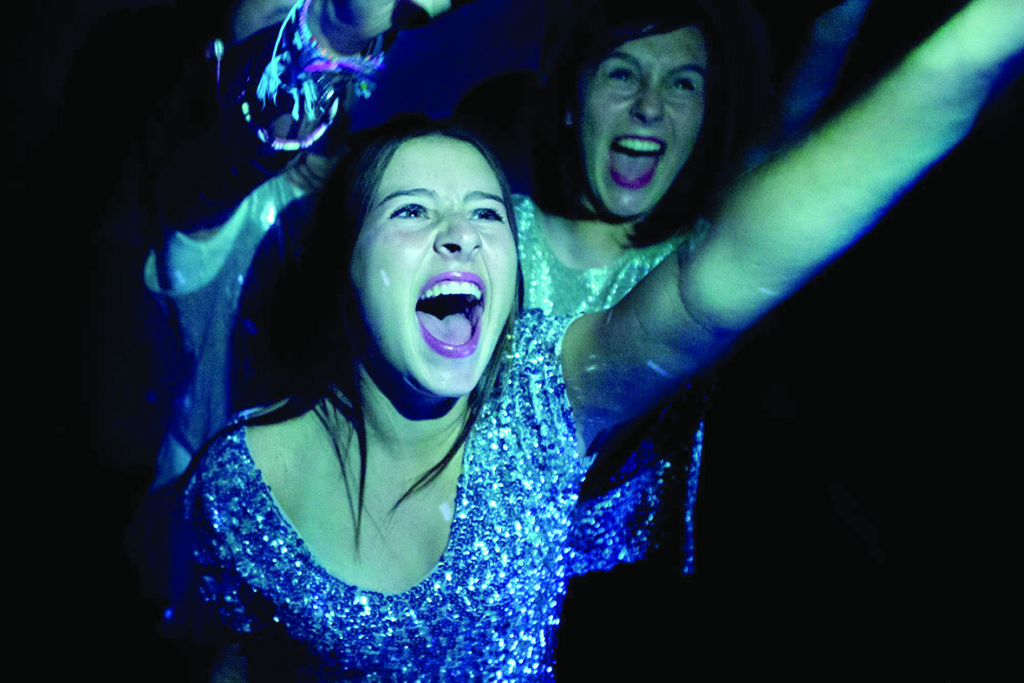
‘That’s what makes you beautiful’
Leski introduces her subjects and their favoured boy bands individually, then jumps from one to another as the documentary progresses. Notably, she tasks Dara with taking to a whiteboard, presenting ‘Boy Band 101’ to school audiences as part of I Used to Be Normal’s impulse to educate about the highly manufactured nature of groups such as Take That and One Direction. Despite the contrasts between the four women’s experiences of male-pop-act idolisation, a common element is immediately evident: the reality that boy bands are designed to spark a reaction in their primarily teenage-female fanbase, to fuel an internal fire at a time when girls are deciding who they are. Accordingly, as we see in the experiences of the film’s subjects, these girls’ sense of self becomes forged and solidified by their love of their chosen boy band.
It’s a thread that recurs throughout the documentary – though each of the four women experiences different levels of comfort regarding shouting (or whispering, or hiding) their obsessions to the world. Susan’s apartment walls are adorned with Beatles memorabilia even now, and Dara drives a car with a ‘BOYBAND’ licence plate, while Sadia speaks of fearing the judgement of others and thus being wary of sharing her fandom with them. It’s in Elif’s tale that the formative impact of boy-band obsession becomes most apparent, however – not only because she is the youngest, but also due to the theme that Leski returns to as Elif grows up. The film acts as a study in Elif’s coming of age, particularly the role that One Direction plays in making her the person she is.
Perhaps surprisingly, Elif’s story doesn’t follow the expected narrative. We first meet her as that bright-eyed, overenthusiastic teenager who can barely contain her fondness for her favourite band, and considers her love of them the defining trait of her personality. But her One Direction journey demonstrates the way in which fandom enables its adherents to evolve and grow. She screams at concerts, she displeases her strict Turkish parents with her obsession and she follows the group around on their tour – in the process, discovering who she is, even when One Direction aren’t around. It’s in her mania that she finds a desire to pursue music as a career, and builds the fortitude to cope with the disappointments that follow. As such, it’s a more melancholy Elif that fills the latter part of the film, now well aware that the dreams crooned about by her beloved ‘boys’ are often just that. Nonetheless, what we see is also a much more self-assured, resilient and determined Elif. Having learnt to face life beyond the rose-coloured lens of attractive young men singing sweet tunes, she possesses the quiet resolve taken from all those hours of internalising feel-good tunes, all that energy expended chasing the objects of her affection and all that awkwardness felt when her passion falls out of step with her friends and family.
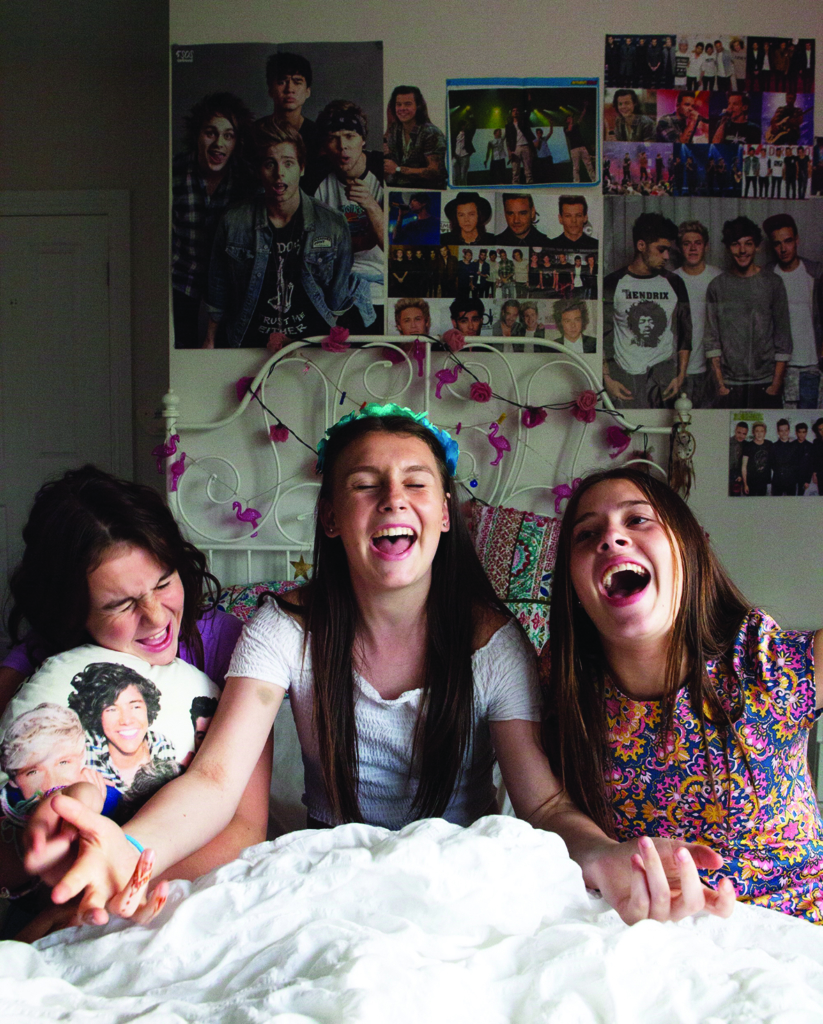
‘All you need is love’
Indeed, Elif’s tale is also one of catharsis, another commonality shared among I Used to Be Normal’s subjects – and, the film posits, another crucial aspect of boy-band fandom. Boy bands allow their fans to not only act out their love, but also learn how to process the world around them. As the documentary’s eldest participant, Susan furnishes its longest-term study, as well as its strongest case of how life’s ups and downs can be weathered with the help of pop obsession. In fact, she’s adamant that her love of Liverpool’s Fab Four has had an integral influence over her life across the past five decades.
Despite the contrasts between the four women’s experiences of male-pop-act idolisation, a common element is immediately evident: the reality that boy bands are designed … to fuel an internal fire at a time when girls are deciding who they are.
‘We absolutely grew up with them,’ recounts Susan, emphasising The Beatles’ role in her journey from adoring teen to still-adoring sexagenarian. Describing her efforts to get a project off the ground that deals with this very subject – a fictional, multi-generational exploration of fandom – she notes how deeply enmeshed the group are in her persona: ‘People know that “Susan Bower” and “The Beatles” – we’re the same.’ She shares recollections of having plastered her walls with newspaper clippings as a teenager and attending Beatles-themed sleepovers, of bringing her children up listening to their tunes, and of the excitement of realising she was on a tourist cruise that Paul McCartney had once been on. More than that, however, she expands on the comfort the Fab Four gave her during her divorce. As she speaks to-camera, quiet sorrow infuses her voice and tempers her gaze as she makes plain that she wouldn’t have gotten through such hardships without her favourite band.
‘Just tell me the song and I’ll sing it’
I Used to Be Normal taps into an area that is oft equated with boy-band fandom in a derogatory fashion: romance. The stereotypical image of teenage female fans today frequently focuses on hormonal hysteria and dismisses the adulation of pop idols as being the product of girls unable to control their impulses. But, with Susan explaining how important The Beatles were in mending her broken heart when she was firmly an adult, Leski’s documentary challenges this idea. Songs about love and holding hands might’ve motivated Susan’s teenage mind years before, but it’s the ideas of hope, happiness and affection contained within them that truly took root, soothing her soul for decades to come.
Similarly, Dara isn’t shy about discussing the overwhelming emotion she felt upon finally seeing Take That in person in her twenties:
I was actually hysterical […] Fifteen years later, I was finally getting to see this band that I should’ve seen when I was twelve. I cried, I laughed, I yelled, I tried to prove my expertise of Gary Barlow over the person next to me.
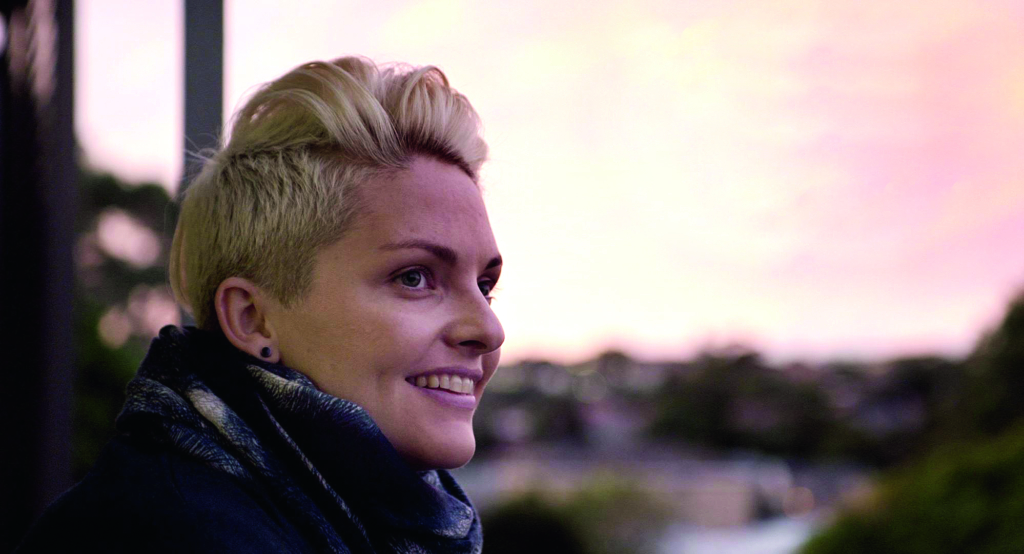
Her reaction might appear to represent a case of arrested development: the clichéd teen response manifesting more than a decade later. The film stresses, however, that it goes beyond this; Take That enabled Dara to discover her sexuality. It’s a powerfully insightful moment when she reflects on her realisation that she didn’t love lead singer Barlow; rather, she wanted to be him – a revelation that informed her eventual identity as a queer woman.
Rewatching Take That concert videos driven by the fanciful idea that she could step into one of the band members’ roles, should she be needed, Dara was trying on a persona and exploring her sexuality, even if the latter didn’t dawn on her until later. And, as she repetitively consumed performances filled with lyrics about topics she now characterises as warm, pure and happy, she did so in a safe space. It’s another rebuttal of the notion that teenage girls simply lust after pop singers unthinkingly, rather than engage with them on a substantial level. It’s also a dismissal of the idea that the emerging sexuality of young women, whether straight or gay, is something to be deprecated – and that this sexuality, and anything that emboldens it, isn’t of value.
‘Quit playing games with my heart’
Sadia’s obsession with the Backstreet Boys perhaps adheres to expected boy-band fan behaviour more than those exhibited by the other I Used to Be Normal subjects – at least where sexual desire is concerned. Brought up in a loving but conservative Muslim household, she laughs now about the raciness of the group’s videos, the impact they had on her and her teenage certainty that band member Nick Carter was going to be her boyfriend. Leski also highlights Sadia’s overt recognition of her parents’ disapproval, as well as her understanding that their dismay was intertwined with her passionate feelings: the Backstreet Boys provided an outlet for her hormonal teen desires.
But Sadia’s zeal also demonstrates the darker side of fandom. With her intense obsession came intense feelings that spilled out in other ways: doing everything she could to champion the band, reacting strongly against anyone who didn’t follow suit, disliking anyone seen as their competition. She shares stories of dedicating every afternoon to her Backstreet Boys fan site, and imploring other fans to vote for their songs on a music-video countdown program. She remembers how angry she was when other aficionados didn’t act accordingly. She voices her strong disdain for the Backstreet Boys’ main rival, *NSYNC. In the process, she frames her behaviour using descriptions familiar to anyone aware of the ‘mean girl’ teen stereotype.
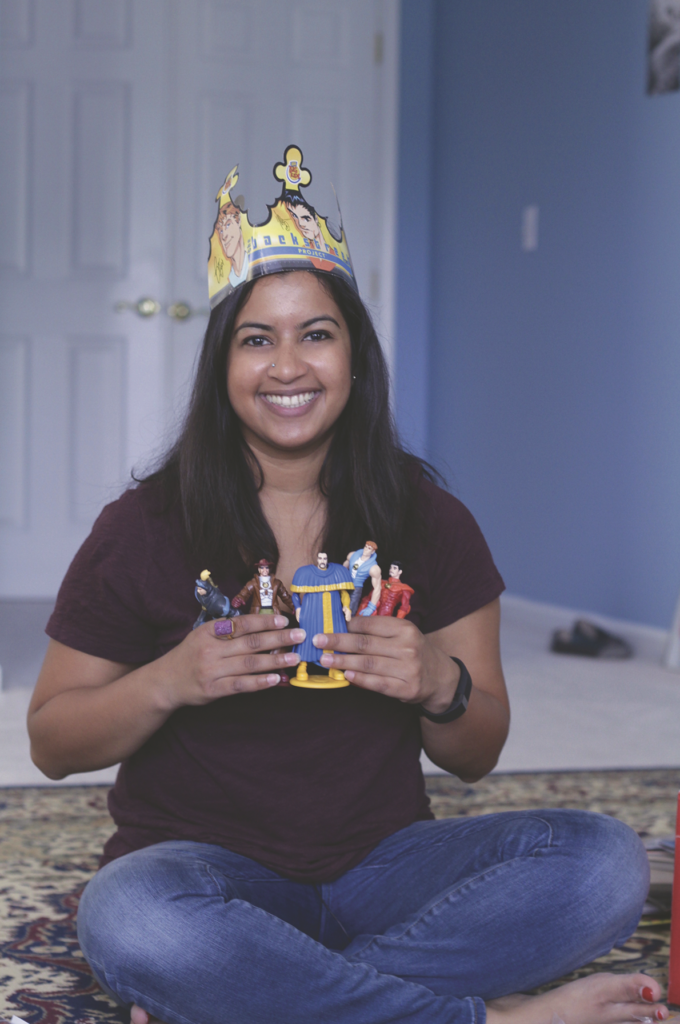
Of course, Sadia recognises the destructiveness of this passion now. In joking about awkward recent meet-and-greets with the band and other fans, as well as about seeing the mass hysteria on the Backstreet Boys’ touring cruise, she doesn’t shy away from discussing the problematic places towards which boy-band fandom can drive its adherents. This is I Used to Be Normal’s nod to a side of the topic that could furnish several documentaries on its own: as the online world highlights with frequency, loving something to the point that it shapes your identity can have negative manifestations. Examples include Star Wars fans’ responses to the series’ more recent instalments, including racist and sexist harassment;[1]Scott Mendelson, ‘How Toxic Star Wars Fans Are Hurting Star Wars’, Forbes, 8 June 2018, <https://www.forbes.com/sites/scottmendelson/2018/06/08/star-wars-toxic-fans-kelly-marie-tran-last-jedi-ghostbusters-oceans-8-incredibles/>, accessed 4 August 2018. Rick and Morty aficionados’ reaction to a marketing campaign, sparking chaos at McDonald’s stores;[2]Anna Livsey, ‘“We Want Sauce”: Police Called over McDonald’s Rick and Morty Promotion’, The Guardian, 9 October 2017, <https://www.theguardian.com/business/2017/oct/08/police-called-after-mcdonalds-rick-and-morty-promotion-heats-up>, accessed 4 August 2018. and even the general backlash that commonly surrounds rebooting or building on a popular property, as seen of late with Buffy the Vampire Slayer. [3]Lesley Goldberg, ‘New Buffy Showrunner Addresses Reboot Backlash’, The Hollywood Reporter, 26 July 2018, <https://www.hollywoodreporter.com/live-feed/new-buffy-showrunner-addresses-reboot-backlash-1130011>, accessed 29 July 2018.
It would be remiss of Leski and her film to not touch on the unhealthier aspects of pop-star devotion, given how visible it is within the realm of popular culture. That said, her documentary and its four case studies work actively to oppose the idea that toxic fandom is pervasive. The joy that loving boy bands has given Elif, Susan, Dara and Sadia is made evident, even when their individual tales step into darker territory. And their musings on how their adoration for their idols has helped mould their senses of self remain the film’s sweetest, cheeriest tune, even eclipsing the energetic tracks that fill its soundtrack.
Endnotes
| 1 | Scott Mendelson, ‘How Toxic Star Wars Fans Are Hurting Star Wars’, Forbes, 8 June 2018, <https://www.forbes.com/sites/scottmendelson/2018/06/08/star-wars-toxic-fans-kelly-marie-tran-last-jedi-ghostbusters-oceans-8-incredibles/>, accessed 4 August 2018. |
|---|---|
| 2 | Anna Livsey, ‘“We Want Sauce”: Police Called over McDonald’s Rick and Morty Promotion’, The Guardian, 9 October 2017, <https://www.theguardian.com/business/2017/oct/08/police-called-after-mcdonalds-rick-and-morty-promotion-heats-up>, accessed 4 August 2018. |
| 3 | Lesley Goldberg, ‘New Buffy Showrunner Addresses Reboot Backlash’, The Hollywood Reporter, 26 July 2018, <https://www.hollywoodreporter.com/live-feed/new-buffy-showrunner-addresses-reboot-backlash-1130011>, accessed 29 July 2018. |
